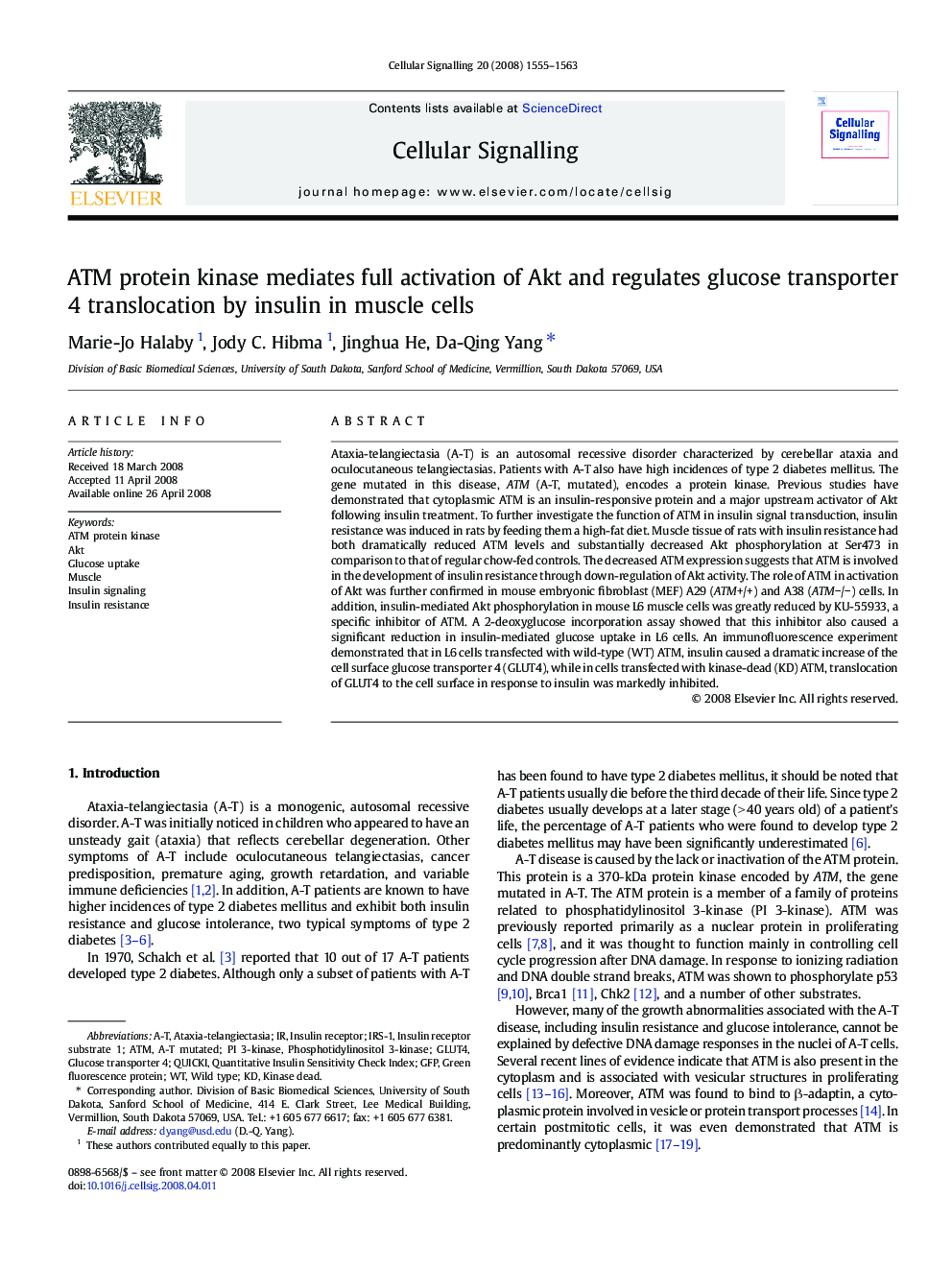| Article ID | Journal | Published Year | Pages | File Type |
|---|---|---|---|---|
| 10817015 | Cellular Signalling | 2008 | 9 Pages |
Abstract
Ataxia-telangiectasia (A-T) is an autosomal recessive disorder characterized by cerebellar ataxia and oculocutaneous telangiectasias. Patients with A-T also have high incidences of type 2 diabetes mellitus. The gene mutated in this disease, ATM (A-T, mutated), encodes a protein kinase. Previous studies have demonstrated that cytoplasmic ATM is an insulin-responsive protein and a major upstream activator of Akt following insulin treatment. To further investigate the function of ATM in insulin signal transduction, insulin resistance was induced in rats by feeding them a high-fat diet. Muscle tissue of rats with insulin resistance had both dramatically reduced ATM levels and substantially decreased Akt phosphorylation at Ser473 in comparison to that of regular chow-fed controls. The decreased ATM expression suggests that ATM is involved in the development of insulin resistance through down-regulation of Akt activity. The role of ATM in activation of Akt was further confirmed in mouse embryonic fibroblast (MEF) A29 (ATM+/+) and A38 (ATMâ/â) cells. In addition, insulin-mediated Akt phosphorylation in mouse L6 muscle cells was greatly reduced by KU-55933, a specific inhibitor of ATM. A 2-deoxyglucose incorporation assay showed that this inhibitor also caused a significant reduction in insulin-mediated glucose uptake in L6 cells. An immunofluorescence experiment demonstrated that in L6 cells transfected with wild-type (WT) ATM, insulin caused a dramatic increase of the cell surface glucose transporter 4 (GLUT4), while in cells transfected with kinase-dead (KD) ATM, translocation of GLUT4 to the cell surface in response to insulin was markedly inhibited.
Keywords
Related Topics
Life Sciences
Biochemistry, Genetics and Molecular Biology
Biochemistry
Authors
Marie-Jo Halaby, Jody C. Hibma, Jinghua He, Da-Qing Yang,
